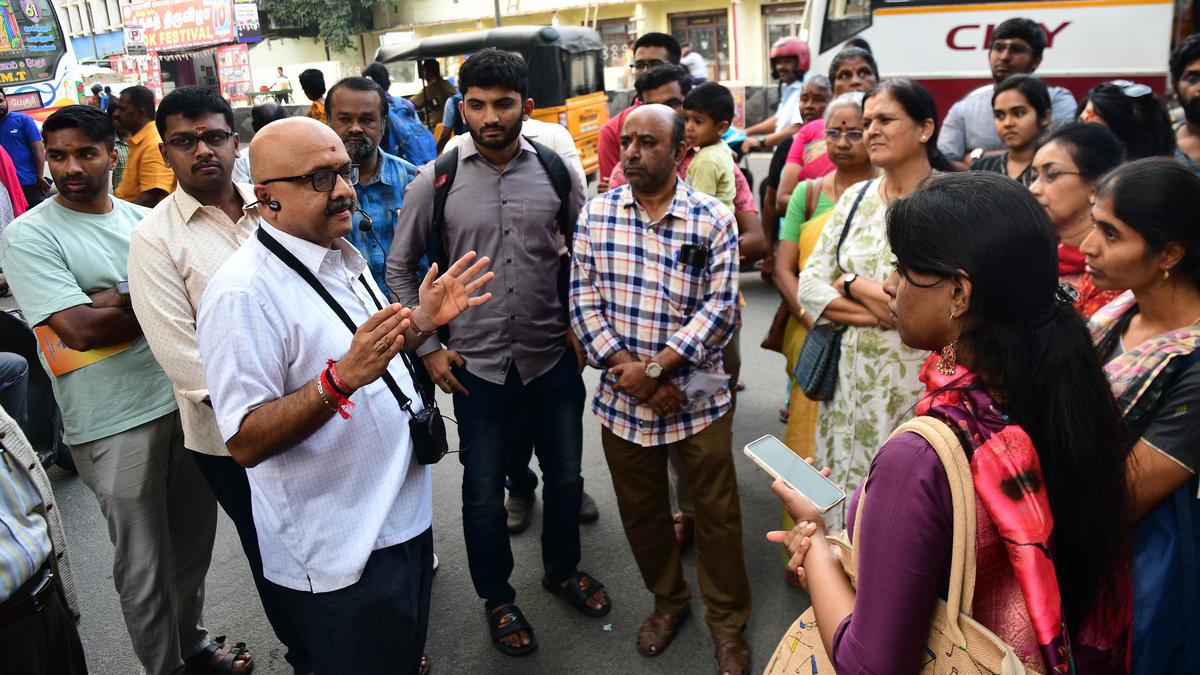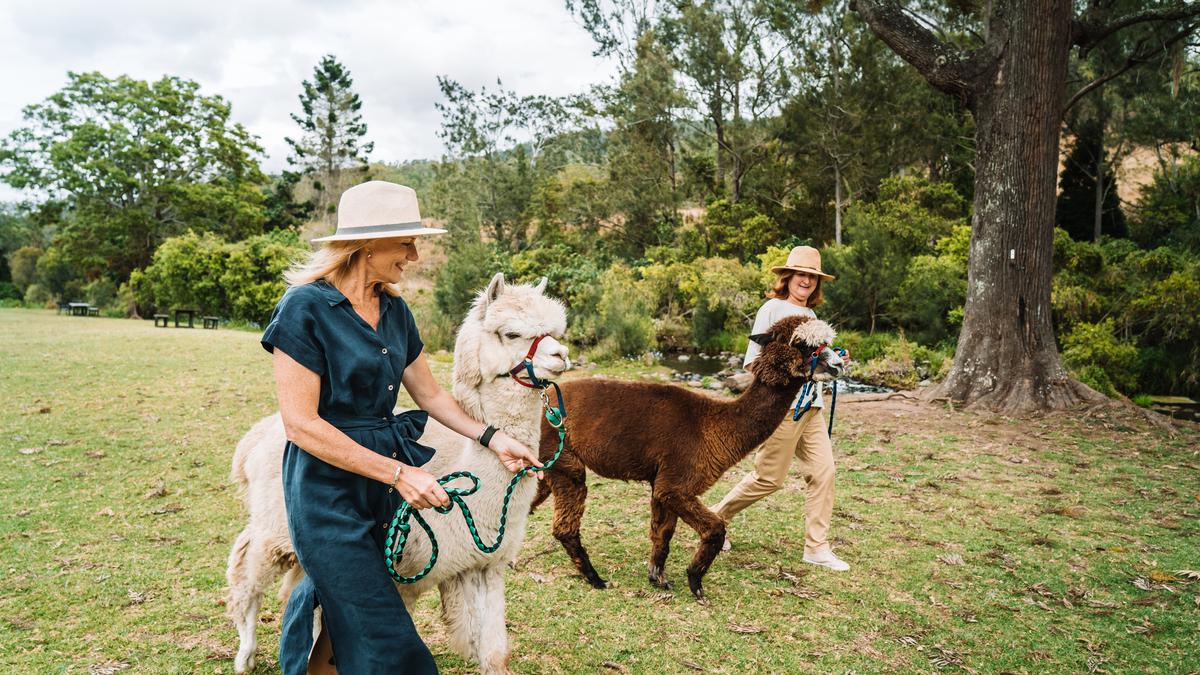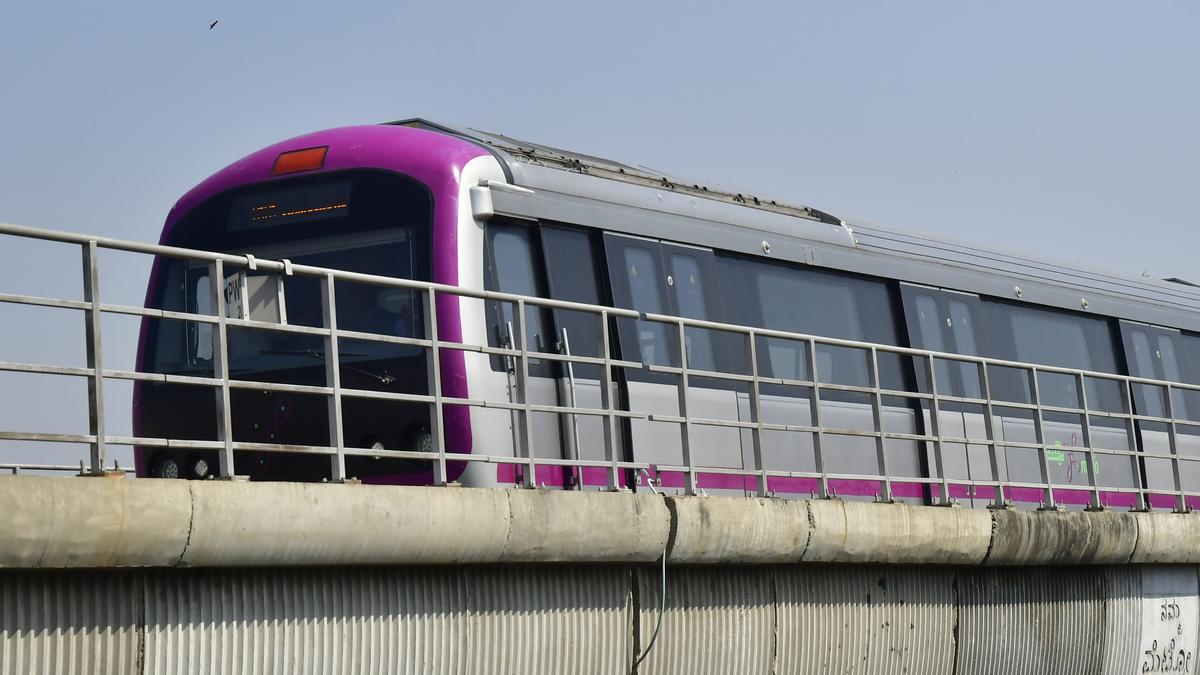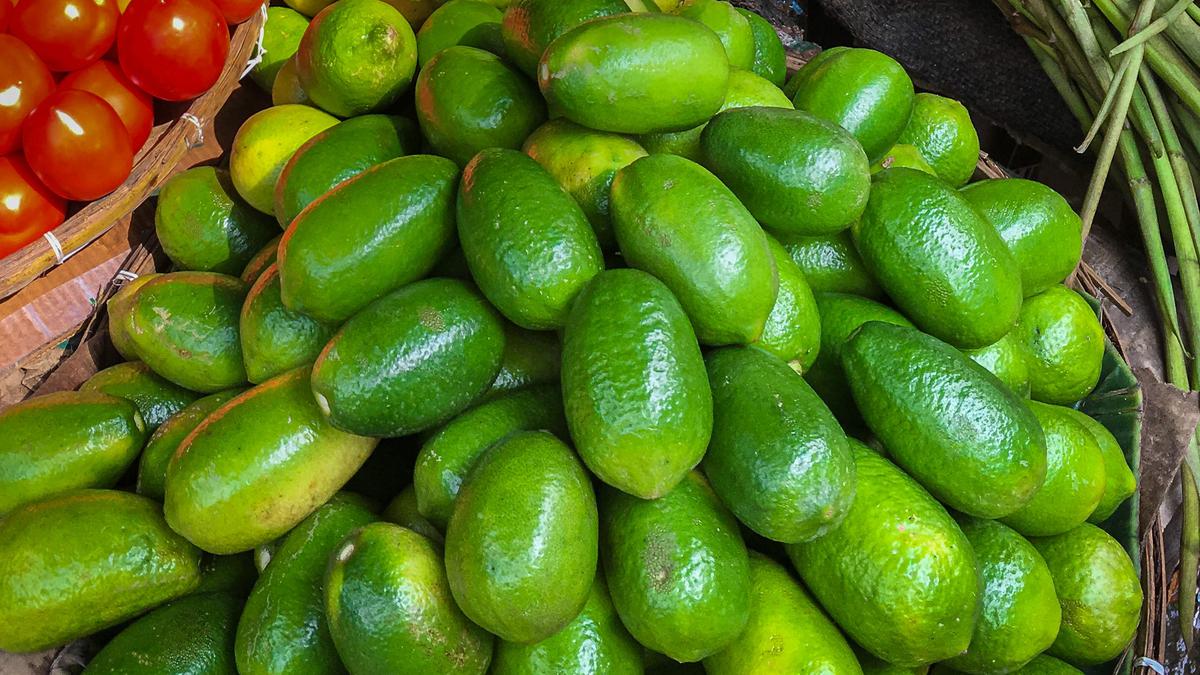Historian Rajesh Govindarajulu with participants of heritage walk at Kottai Eswaran temple near Town Hall in Coimbatore.
| Photo Credit: Siva Saravanan S
The golden orange sun, seen amid the foliage of the neem tree at Koniamman Temple, prepares for its descent. A pigeon, comfortably perched in the middle of the 84-foot tower at the entrance, seems to survey the group of humans below. The sun, the neem tree, the tower and its resident pigeons must have seen scores of devotees entering the temple carrying hopes, dreams, sorrows, happiness, expectations, and disappointments, along with some material offerings to the deity inside. But on the second day of 2024, the bunch of humans at the temple’s entrance aren’t there for mere devotion; they are here to observe — the heritage and history of Coimbatore, beginning with the temple and its neighbourhood.
“Welcome to the 16th year of the Coimbatore Heritage Walk,” the words emerge from a wearable voice amplifier hanging on Rajesh Govindarajulu’s chest. “I have been using this [device] for the last few years because it’s gotten challenging to speak through the traffic noise,” he tells us, the participants of the walk, organised by Rajesh and Priya Ramakrishnan, a conservation architect, as a part of Coimbatore Vizha.
Born, raised, and settled in Coimbatore, Rajesh is a veteran chronicler of the city’s history. The heritage walk covers a distance of about 2 kilometres from Koniamman Temple on Peria Kadai Veedhi (Big Bazaar Street) to Garadi Perumal Temple. It takes participants through Town Hall, a fascinating part of the city, where communities of different cultures separated by languages, businesses, foods, and faiths cohabit. It passes through several structures and spaces mutated by time. It helps in identifying the past enmeshed with the present.
Every 10 steps we take, we stumble across a piece of history hiding in plain sight. Rajesh pauses, identifies it, and unravels the stories it contains. A weary white building belonging to Kurangu Seth (the founder of the erstwhile ‘Monkey’ oil brand) that has housed Mohandas Gandhi, Kasturbha, and Vallabhai Patel; the oldest police station in the city; Tamil Shaivite scholar CK Subramania Mudaliar’s home on Vysial Street; the 120-year-old Athar Jamad Masjid, Suparaswanath Jain Mandir, and Garadi Perumal Koil (in the same neighbourhood)… there is so much to take in and marvel at.
Exploring a city holds significance for various reasons, according to Rajesh. “There are numerous hidden gems intertwined with the city’s fabric that often go unnoticed,” he says, “Uncovering these nuggets not only satisfies one’s curiosity but also contributes to a deeper understanding of history. This knowledge, in turn, aids in the preservation of the city’s historical elements, offering a glimpse into unfamiliar aspects. Observing and understanding the evolution of the city’s construction style, food habits, and business practices provide valuable insights into its history.”
“Regular visitors can witness the gradual deterioration of old structures, acknowledging the role of stakeholders in these changes. This awareness becomes a catalyst for public policy suggestions. Participating in these walks also brings attention to environmental concerns like noise and air pollution,” he adds.
The walk was an eye-opener for architect Tharangini, one of the participants. “Though I have lived all my life in Coimbatore, I didn’t know the history of some of these buildings. They aren’t mere bricks and stones; they are a window to understanding the way of life of the past. And, these spaces are connected to everyday social interactions,” she says.
“I didn’t know Coimbatore had this much history,” says Mareeswaran Ganesan, another participant. He is a mechanical engineer from Sennilakudi, Aruppukottai, who has been working in the city for the last four years. “I know the city as an industrial town with maybe a few hundred years of history. But some of the places here date back to thousands of years.”
Apart from the astonishment over the antiquity of Coimbatore, the walk also gave him the realisation of its multiculturalism. “I have roamed this area to buy clothes for Deepavali. But I never noticed a Jain temple, a mosque, and a Hindu temple, all in the same location! It is important to know and preserve this history in this political climate of religious division. Thanks to this walk, my respect for the city as an outsider has grown,” he says.




